Could The Local Group Help Solve The Mystery Of Supermassive Black Holes?

The most massive nearby stars could be the seeds our supermassive black holes need.
The problem with the Universe, as we see it today, is that we only get a snapshot of how things are right now. Nearby, the objects we see are well-evolved, as we see them as they are 13.8 billion years after the Big Bang. Far away, however, it might take millions, billions, or even more than ten billion years for the emitted light to arrive at our eyes, meaning that we’re looking back in time. Part of the trouble with reconstructing the growth and evolution of the Universe — as we attempt to answer the question of “how did things get to be the way they are today?” — is that we only have this one instant in which we can observe the Universe.
One of the great puzzles in our Universe is how supermassive black holes, the ultramassive behemoths at the centers of galaxies and quasars, grew to be so big so fast. Sure, the Milky Way has a supermassive black holes that’s 4 million solar masses, but it had 13.8 billion years to make it. Other galaxies have supermassive black holes that climb into the billions or even tens-of-billions of solar masses. But what’s a surprise is that galaxies that are under one billion years old still have black holes that are comparably large. Surprisingly, the most massive group of nearby stars might shed some light on solving that mystery. Here’s how.
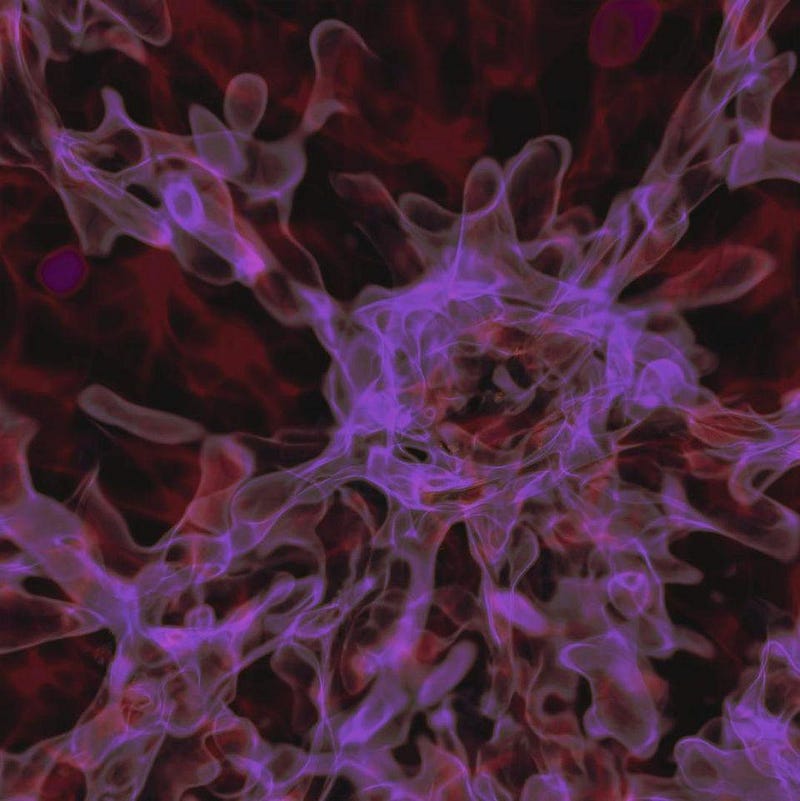
If you want to grow a black hole to very large sizes very quickly, you basically have three options.
- You begin the Universe with “seed” black holes before you ever get stars, and they grow with the Universe.
- You form black holes from the first generations of stars, and then these “seed” black holes grow to be the ones we see later on.
- Or you form black holes from the first generations of stars, they merge in a rapid process to create larger “seeds,” and then these black holes grow to be the ones we see later on.
The first scenario is possible, but shouldn’t be our default position. The fluctuations that appear in the cosmic microwave background — so they’re very observationally robust — tell us what the Universe was like very early on. On average, the Universe was the same density everywhere, with tiny imperfections on top of it. Some regions are overdense and some are underdense, departing from the average density by about 0.003%, on average. These departures are almost the same on all scales, with fluctuations on larger cosmic scales being of slightly larger magnitude (by a few percent, only) than fluctuations on smaller scales.
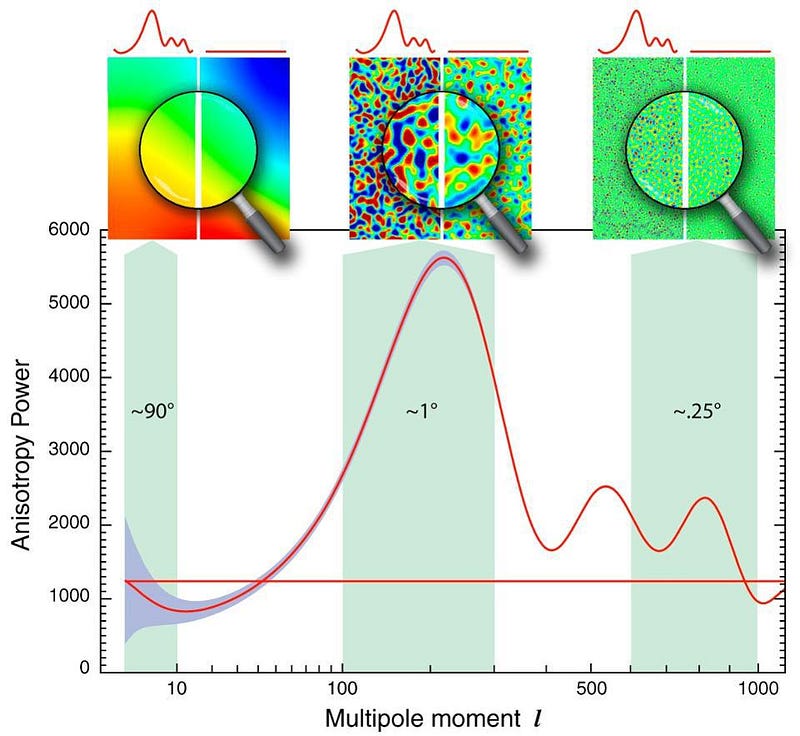
But if you want to be “overdense” enough to collapse to a black hole before you ever form stars — achieving a scenario known as “primordial black holes” — you need to achieve a density that’s about 68% greater than the average density. Clearly, there’s a big difference between 0.003% and 68%; enough of a difference that if we want to invoke the existence of these primordial black holes, we require new physics. That’s not necessarily a dealbreaker, as there might be new physics out there, but it’s important to seriously consider the null hypothesis: that we can explain the Universe we have without resorting to something novel.
So let’s try that. The Universe is born with underdense and overdense regions, and thereafter it expands, cools, and gravitates. Overdense regions attract more and more matter to them, causing them to grow. Early on, most of the Universe’s energy is in radiation, not matter, and so the radiation pressure increases, pushing back against the growing matter regions. As a result, we get “bounces,” or oscillations, as the matter collapses, radiation pushes back causing the matter to go outwards, and the cycle continues.
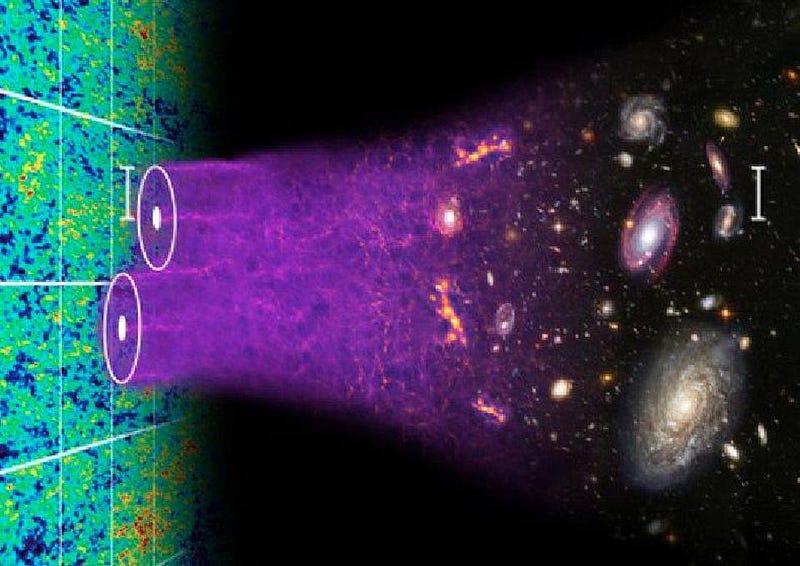
However, when we account for all of the physics, we find that the greatest overdensities occur where the “bouncing” reaches a peak, which happens only on specific angular scales. These features in the cosmic microwave background, known as “acoustic peaks,” also show up in the large-scale structure of the Universe that exists at late times: a big hint that our picture of the Universe is on the right track. Once the Universe forms neutral atoms, that radiation becomes insignificant, and gravitational collapse can rapidly proceed.
You might think, “oh, the gas will collapse and form stars, just like they do today,” but that’s not quite right. Today, the way we form stars is through the collapse of gas clouds, sure, but in order to form stars, that collapsing gas needs to cool. This is a big problem: there’s a lot of potential energy that will get converted into kinetic (or thermal/heat) energy when it contracts, and in order to collapse down to an object like a proto-star, you have to radiate enough of that heat away. In the early Universe, this is a problem.

Today, about 1–2% of all the material (by mass) in a collapsing cloud of gas is known to astronomers as “metals,” meaning elements higher on the periodic table than hydrogen and helium. These “metals” — like oxygen, carbon, sulfur, and other atoms that only an astronomer would consider a metal — are much more efficient heat radiators than either hydrogen or helium. As a result, the average mass of a new star, today, is about 40% the mass of the Sun. There will still be massive stars that form: of tens or even up to about 300 solar masses, but that’s the practical limit.
But early on, there was only hydrogen and helium. The most efficient way (that I know of) to radiate heat away from these components is the small amount of molecular hydrogen gas (H2) that will form, but even with hydrogen gas present, you won’t form stars like we do today. What you’ll require, instead, is much larger clouds of gas: about 100 times more massive than the clouds that typically form stars today. And when you do form stars, they won’t be like the ones we have today at all. Instead, they will be:
- about 10 solar masses on average, or about 1000% the mass of the Sun,
- with the most massive stars reaching easily into the hundreds and possibly even into the low thousands of solar masses,
- meaning that a significant fraction of these stars might not only form black holes, but might do so immediately: through a process known as direct collapse.
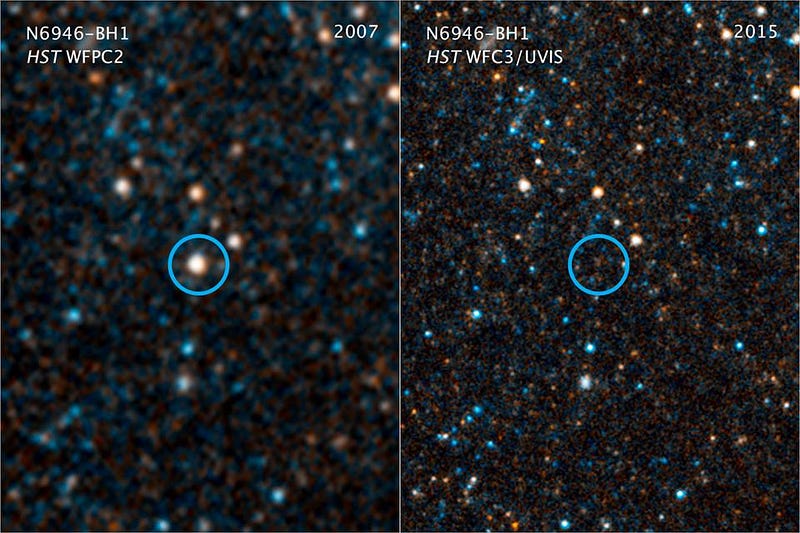
We’ve witnessed massive stars in our modern Universe simply “wink out” of existence, as though they suddenly disappeared. Disappearance isn’t really a physical option for what’s happening, however; the only real option is that the cores of these stars suddenly failed to hold themselves up against gravitational collapse. While most massive stars that we know of will go supernova, where their cores collapse, implode, rebound, and trigger a series of runaway fusion reactions, leading to either a destroyed star (through something like the pair-instability mechanism), a neutron star, or a black hole as a remnant, all of those events lead to a tremendous brightening event along with them.
What we see, however, is none of the above. There is no brightening event associated with these “disappearing stars.” Instead, they must be undergoing another process: direct collapse to a black hole. We fully expect direct collapse to occur in a fraction of stars, dependent on their mass, their metallicity (fraction of metals compared to hydrogen and helium), and a few other factors related to their evolution during their lifetimes. In other words, a fraction of these early stars — like their modern, less-massive (on average) counterparts — will directly collapse to form black holes.

So then, at last, we come to the second scenario for making supermassive black holes: if one of these black holes becomes a “seed” black hole, that will grow into a supermassive black hole, can we get a black hole that’s massive enough in time?
The answer appears to be “no.” The most massive seed black holes we can make through this mechanism might be a few thousand solar masses, and that’s not nearly enough. Even if we upped that figure to 10,000 solar masses, demanded that these black holes formed right during the first expected major wave of star-formation in the Universe (about 180 million years after the Big Bang), and then allowed these black holes to grow at the maximum rate physically possible — at the Eddington limit — until we observed them as quasars a few hundred million years later, they simply don’t get big enough fast enough.
In January of 2021, astronomers announced the discovery of the largest, earliest black hole ever: 1.6 billion solar masses from when the Universe was only 670 million years old, or just 5% of its current age. Even if we push the limits on all of these factors, we simply can’t grow a seed black hole this big this quickly.

But here’s where the late-time Universe might help us. If we look around in our local neighborhood, the largest star-forming region we have is located in the Tarantula Nebula. It’s not found in the Milky Way, nor in our larger neighbor Andromeda, but rather in a smaller galaxy located ~165,000 light-years away: the Large Magellanic Cloud. It’s currently being gravitationally influenced by our Milky Way, and the gravitational force of our galaxy is triggering the gas inside it to collapse, where it’s already created the largest star-forming region within our Local Group: 30 Doradus.
There are literally thousands of new stars that have already formed within this region, and in particular there is an enormous central cluster full of supermassive stars inside. The central star cluster of this region, NGC 2070, contains dozens of stars more massive than 50 solar masses, about ~10 stars that are 100 solar masses or more, and its central component, the cluster R136, contains arguably either the most massive or second most massive star known, R136a1, which comes in at between 215 and 260 solar masses.
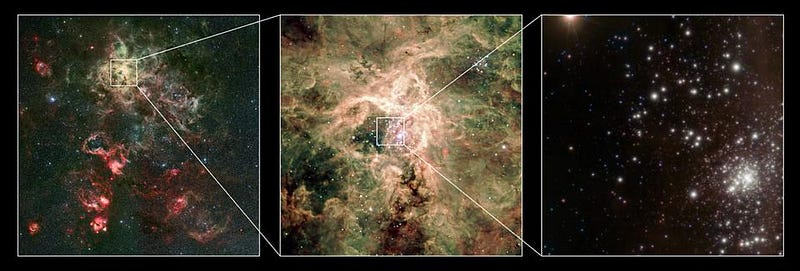
One of the most contentious topics in astronomical research in this region is exactly what the central mass density of the densest region in a cluster like this is. In the innermost ~1 light-year, for example, we know there must be at least thousands of solar masses in there, at least thousands of stars, and that the central density might be as high as ~1 million solar masses per cubic light-year at the absolute peak.
Now, here’s the fun thing: since the discovery of gravitational waves, we’ve learned that when you make black holes, they will eventually inspiral and merge. If they get closer than about 0.01 light-years from one another, they will inspiral and merge in less time than the present age of the Universe. And if you have enough matter — gas, dust, plasma, etc. — in the intervening region, they can not only feed these black holes, but can act as an effective drag force, reducing the distance between them.
Is this enough of a mass enhancement, at early times, to solve the mystery of how supermassive black holes got so big so fast? Perhaps. But it’s the greatest test for the null hypothesis: if we can make these objects without invoking any new physics, that would be the most parsimonious solution to this longstanding puzzle.
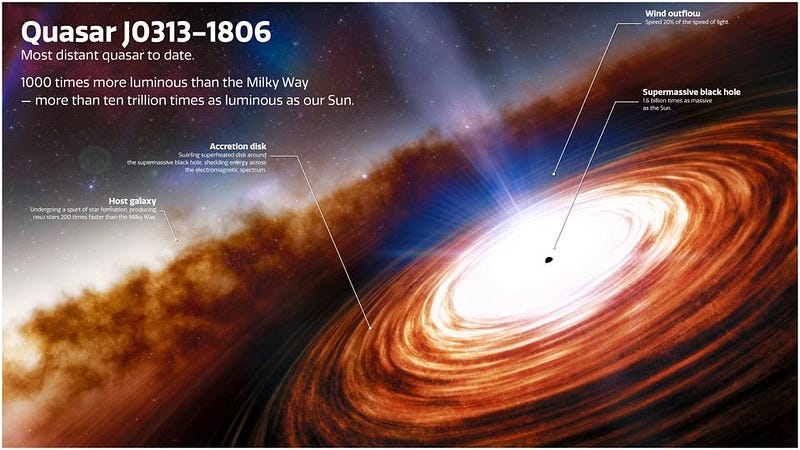
There’s a puzzle in our Universe that demands an explanation. In the youngest, earliest quasars that we see, we find evidence for not just supermassive black holes, but for extremely massive supermassive black holes at extremely early times. The earliest, most massive one is just 670 million years old, but is already 1.6 billion solar masses. Even if we take the most massive, earliest star we could have formed, turn it into a black hole immediately, and let it grow at the maximum rate possible, it just doesn’t have enough time to get this large.
But the way actual star clusters work, with huge, peaked central densities, might give us a clue to the resolution of this puzzle. A large number of massive stars — many of which could become black holes in short order — might allow the first generation of stars to quickly form a large “seed” black hole from the merger of multiple such objects. With an early seed black hole of a million solar masses, even if it took ~300 million years to form it, we could easily get black holes of the masses we observe a few hundred million years later.
Could this be the resolution to how black holes get so big so fast? If so, it’s something the James Webb Space Telescope might be able to reveal. And if so, it will be a tremendous victory for astrophysics as we know it today. Perhaps we don’t need to invoke new physics to explain this mystery, after all.
Starts With A Bang is written by Ethan Siegel, Ph.D., author of Beyond The Galaxy, and Treknology: The Science of Star Trek from Tricorders to Warp Drive.





